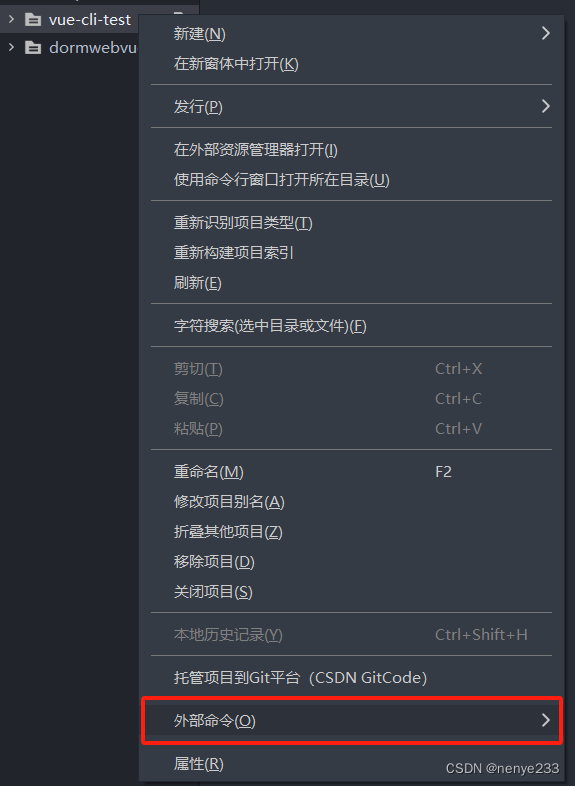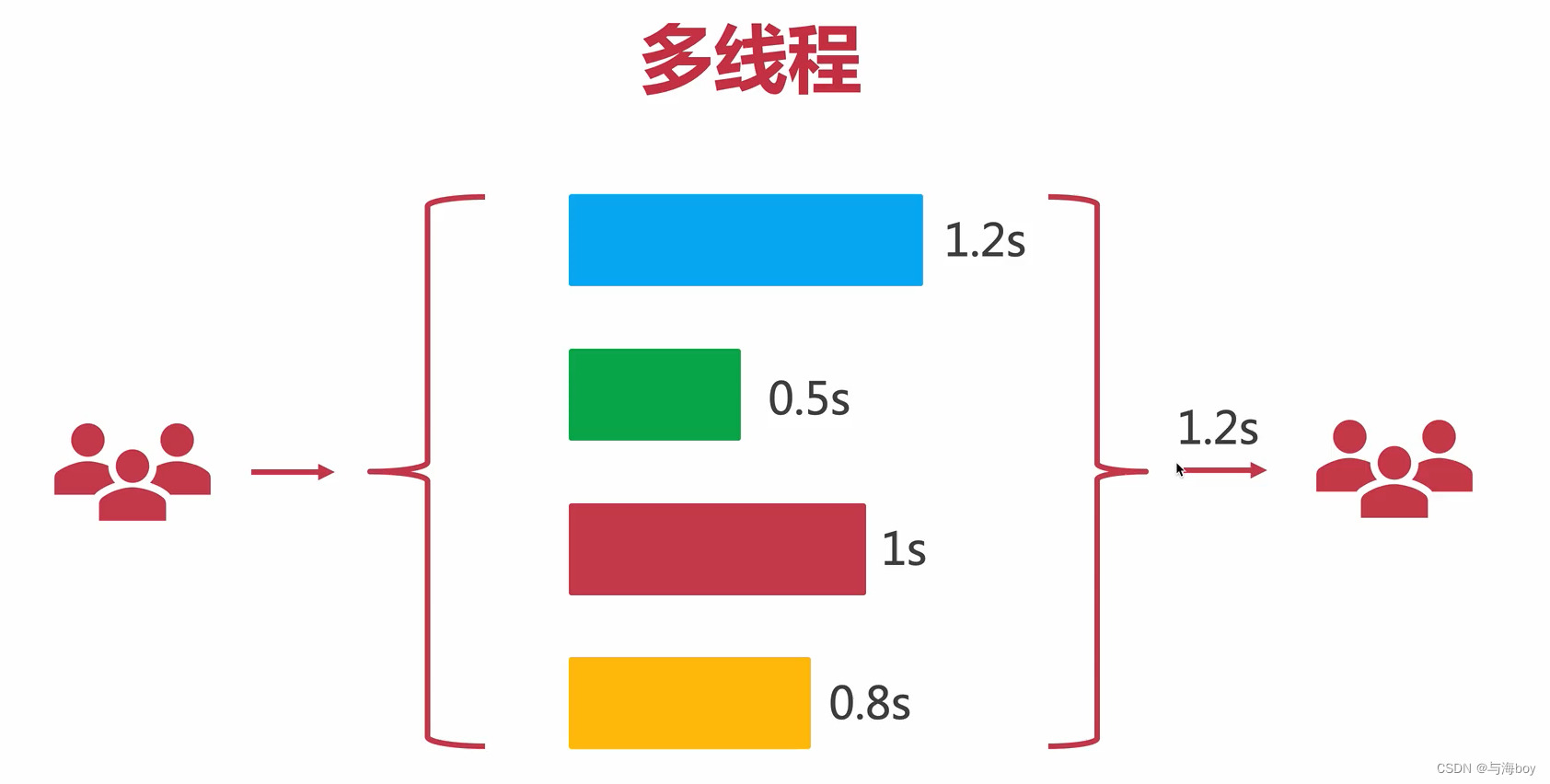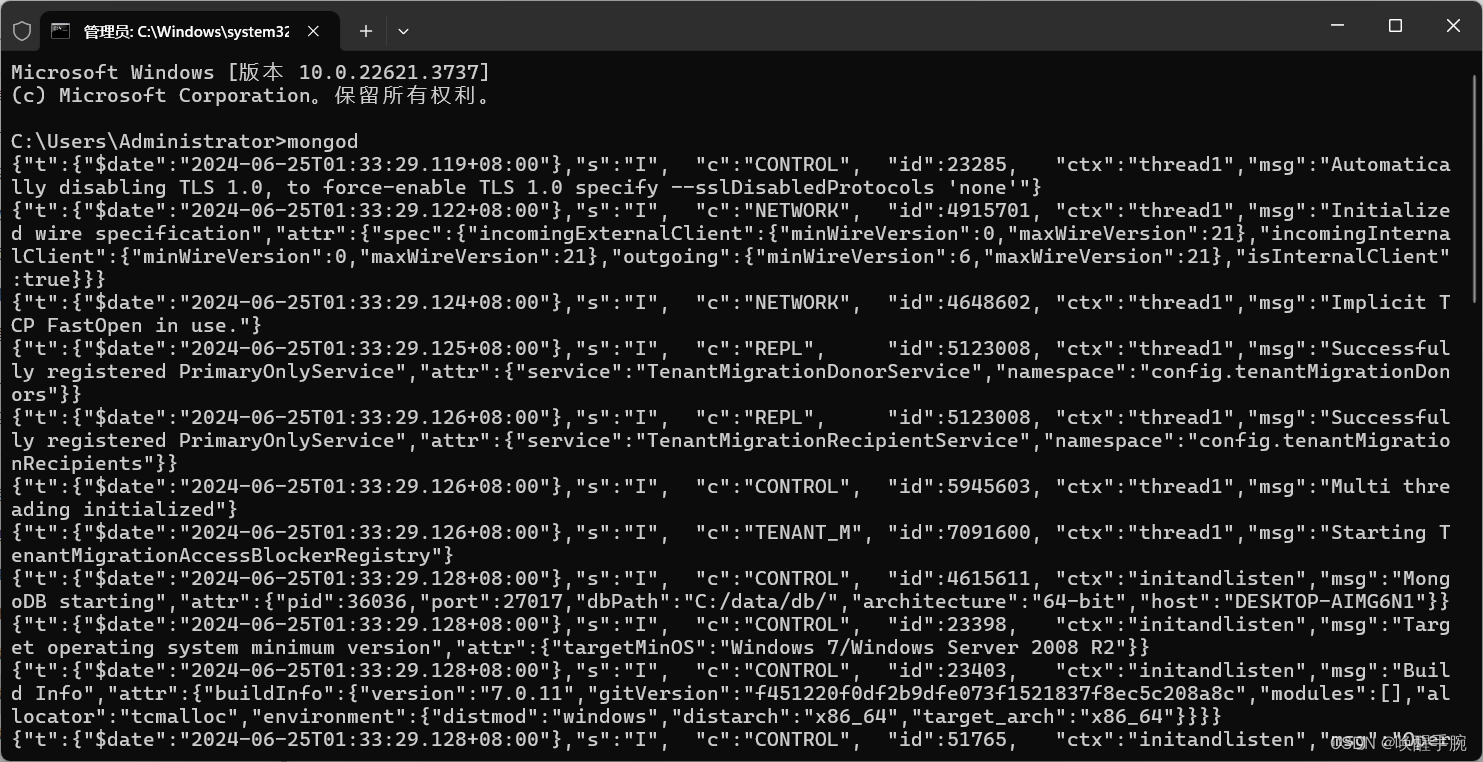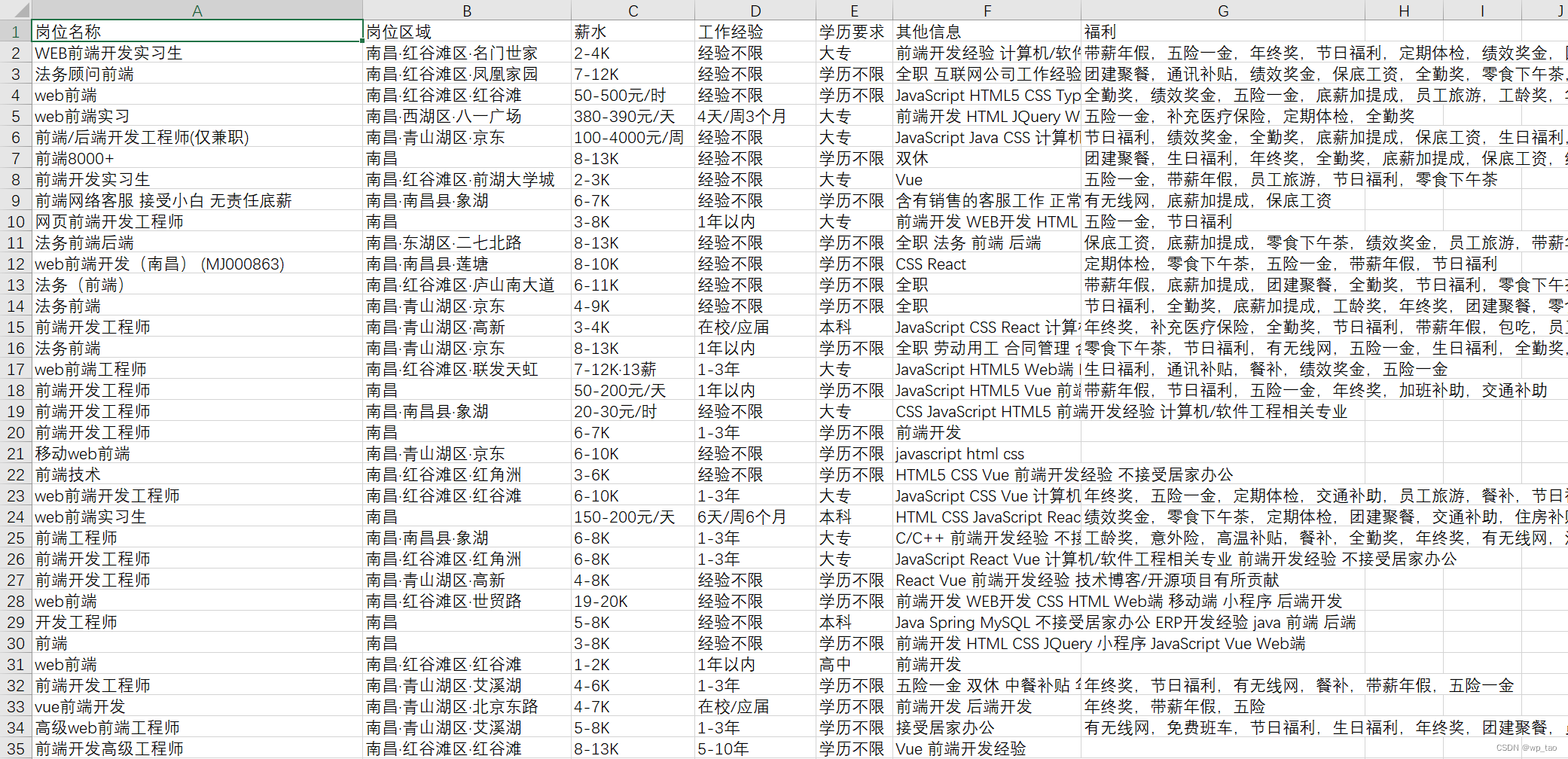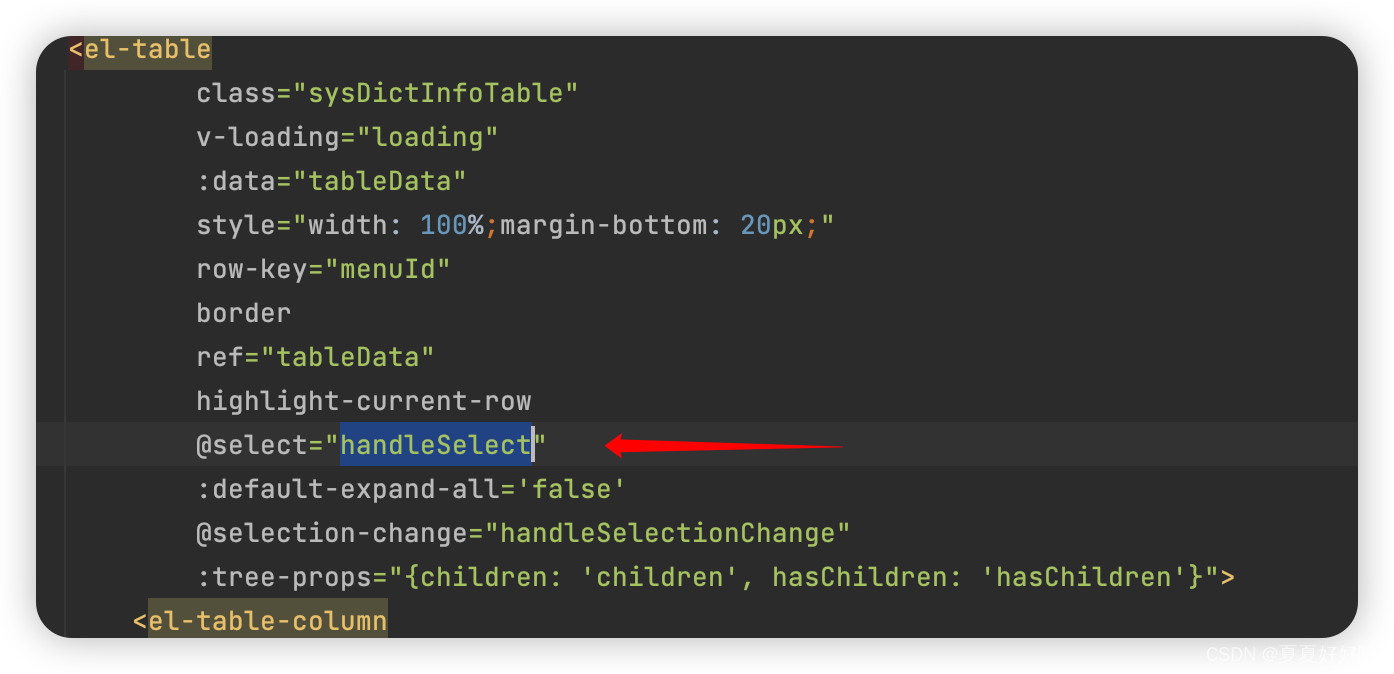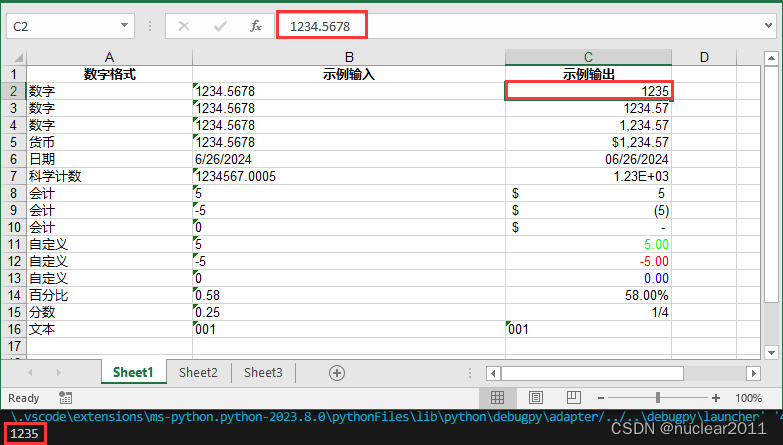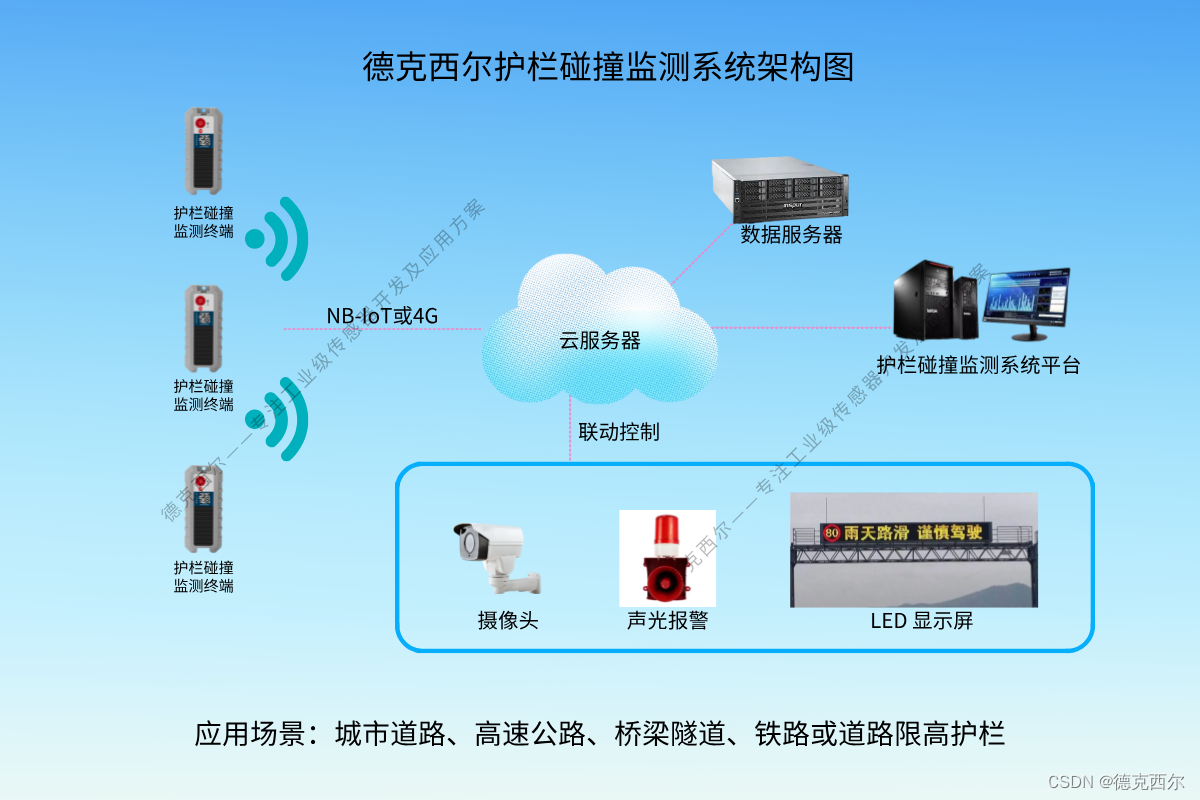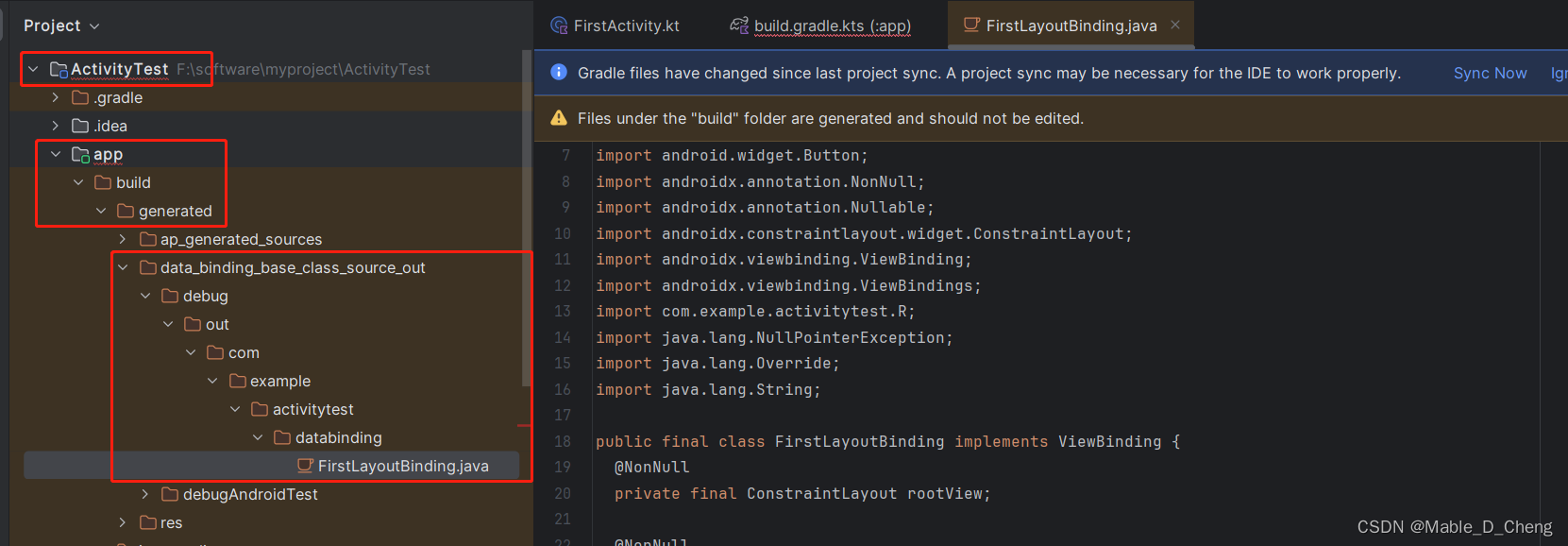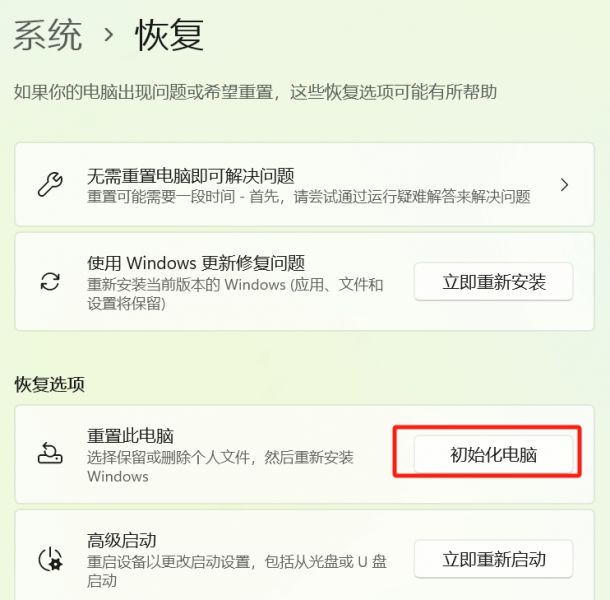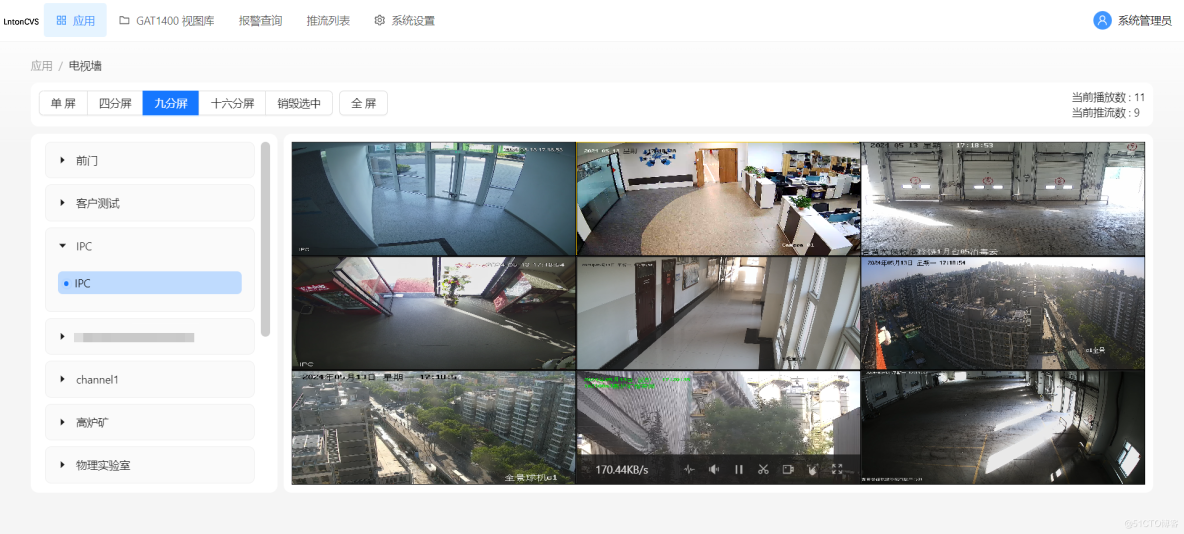autoware.universe源码略读3.3--perception:tensorrt_yolo
- 模块组成
- cuda_utils(CUDA接口)
- calibrator(校准器)
- ImageStream
- Int8EntropyCalibrator
- mish(mish激活函数,基于CUDA)
- mish_plugin(mish激活函数插件)
- MishPlugin
- MishPluginCreator
- nms(非极大值抑制)
- nms_plugin(NMS插件)
- yolo_layer(YOLO模型层)
- yolo_layer_plugin(YOLO层插件)
- trt_yolo(基于TensorRT的YOLO过程)
- nodelet
- 总结
模块组成
这里趁着刚看过YOLO系列的相关知识,直接来看下这里的YOLO模块调用是怎么实现的。首先这里和其他部分没什么区别的地方是,也是一个继承于rclcpp::Node的类,在lib文件夹中则是具体功能的相关实现,比如从名字看起来mish应该是负责激活函数的,nms应该就是非极大值抑制的,当然trt_yolo应该就是yolo的主体部分了,这个部分的组成大概就像下面这张图这样,接下来就分开来简单看下

cuda_utils(CUDA接口)
这里主要是为了适配CUDA而写的一部分接口功能函数,没有什么特别需要说的。
calibrator(校准器)
这个校准器里面有两个部分,一个是ImageStream,这里应该就是输入的图像流;还有一个部分则是Int8EntropyCalibrator,可以看到这个类是继承自TensorRT中的nvinfer1::IInt8EntropyCalibrator2类的,所以具体执行校准的步骤应该是这里
ImageStream
这里主要是对输入的图像流进行预处理吧。这里的batch_,应该就是指一次处理的数据,那么batch_size_应该对应的就是一次处理几张图片?这里还有的就是这个input_dims_,这里应该是与输入图像的性质关联的,根据构造函数的代码
batch_.resize(batch_size_ * input_dims_.d[1] * input_dims_.d[2] * input_dims_.d[3]);
那我估计这里对应的就是每次输入,后边三个对应的可能就是通道数、图像宽度和图像高度了吧。
图像流的遍历操作是通过next函数实现的,这个其实很简单,就是对calibration_images_进行遍历,然后把经过预处理后的图片插入到batch_尾部。至于预处理的话,在preprocess函数中
std::vector<float> preprocess(const cv::Mat & in_img, const int c, const int w, const int h) const
{
cv::Mat rgb;
cv::cvtColor(in_img, rgb, cv::COLOR_BGR2RGB); // BGR to RGB
cv::resize(rgb, rgb, cv::Size(w, h)); // Resize
cv::Mat img_float;
rgb.convertTo(img_float, CV_32FC3, 1 / 255.0); // Normalize
// HWC TO CHW
std::vector<cv::Mat> input_channels(c);
cv::split(img_float, input_channels); // Split based on channels
std::vector<float> result(h * w * c);
auto data = result.data();
int channel_length = h * w;
for (int i = 0; i < c; ++i) {
memcpy(data, input_channels[i].data, channel_length * sizeof(float));
data += channel_length;
}
return result;
}
Int8EntropyCalibrator
这个类用于实现 TensorRT 的 INT8 校准机制,该机制通过使用校准数据来确定量化后的 INT8 模型在推理时的精度。构造函数就是根据传入的数据流,进行内存的分配,剩下的函数实现其实都是针对于nvinfer1::IInt8EntropyCalibrator2中虚函数的实现吧。
getBatch:这个函数是获取了当前批次的数据(调用了图像流的next函数),然后把内存从CPU复制到了GPU,并且更新bindings数组以指向设备内存。readCalibrationCache:从缓存文件读取校准数据,返回了校准数据的长度writeCalibrationCache:将校准数据写入缓存文件
mish(mish激活函数,基于CUDA)
这个文件的作用没什么好说的,就是实现了mish激活函数的计算,这里涉及到了CUDA函数的前缀,可以参考这篇文章,所以__device__前缀的就是在GPU上执行的函数,__global__则表示在GPU上执行,但在CPU上调用的函数,像这个文件就是,核心的计算公式是在__device__ float mish(float x)这里,但是调用的时候又调用的是__global__ void mishKernel(const T * input, T * output, int num_elem)这个方法
另外的一点就是,这里似乎上不是标准的mish函数?mish函数里的计算步骤与标准的mish激活函数中的明显不同,可能是简化版本的吧?
__device__ float mish(float x)
{
float e = __expf(x);
float n = e * e + 2 * e;
if (x <= -0.6f) return x * __fdividef(n, n + 2);
return x - 2 * __fdividef(x, n + 2);
}
如果是标准的话,应该是下面这样?
__device__ float mish_standard(float x)
{
return x * tanh(log1p(exp(x)));
}
不太清楚这里使用的这个形式有什么好处,不过毕竟只是在推理的时候使用到,应该大差不差吧
mish_plugin(mish激活函数插件)
这里是为TensorRT添加了一个激活函数的插件,里面也是分成了两个类,一个是MishPlugin应该就是具体的插件类,继承自nvinfer1::IPluginV2DynamicExt,另一个类就是MishPluginCreator,看起来作用是生成一个插件类的
MishPlugin
这个类是一个实现自定义 TensorRT 插件的示例,用于在推理过程中应用 Mish 激活函数。实现了一些 TensorRT 插件接口的方法,使其可以集成到 TensorRT 的推理引擎中。
在这里涉及到的函数里,有很多地方都有这样的代码:
(void)inputTypes;
搜了下这里的作用好像就是先显式地标记某些未使用的参数,这样即使后边没有用到这个参数,编译的时候也不会发出相关的警告。在这个类中,执行mish激活函数的部分在enqueue函数之中,
int MishPlugin::enqueue(
const PluginTensorDesc * inputDesc, const PluginTensorDesc * outputDesc,
const void * const * inputs, void * const * outputs, void * workspace,
cudaStream_t stream) noexcept
{
(void)inputDesc;
(void)outputDesc;
(void)workspace;
const int input_volume = volume(inputDesc[0].dims);
int status = -1;
const float * input = static_cast<const float *>(inputs[0]);
float * output = static_cast<float *>(outputs[0]);
status = mish(stream, input, output, input_volume);
return status;
}
MishPluginCreator
这个类的作用是实现 TensorRT 插件创建器接口,用于创建和反序列化MishPlugin插件。它是 TensorRT 插件机制的一部分,负责提供插件的元数据,并在需要时创建插件实例。这里有两个静态成员变量:
PluginFieldCollection MishPluginCreator::mFC{};
std::vector<PluginField> MishPluginCreator::mPluginAttributes;
mFC是一个PluginFieldCollection,用于存储插件的字段信息(即插件的参数)。mPluginAttributes 是一个 PluginField的向量,用于保存具体的插件字段。构造函数中清空了mPluginAttributes并将其信息设置到mFC中。而在函数createPlugin之中,则是完成了这个插件的生成,具体到代码里就是new了一个MishPlugin并且设置了命名空间。
MishPlugin * obj = new MishPlugin();
obj->setPluginNamespace(mNamespace.c_str());
return obj;
还有一个函数是反序列化的操作,因为通常数据会序列化成类似于二进制的形式用于传输和储存,所以这里将之前经序列化储存过的对象反序列化成了插件实例
// This object will be deleted when the network is destroyed, which will
// call MishPlugin::destroy()
MishPlugin * obj = new MishPlugin(serialData, serialLength);
obj->setPluginNamespace(mNamespace.c_str());
return obj;
nms(非极大值抑制)
之前有提到过,非极大值抑制的主要作用是在YOLO检测到物体后,防止一个物体被多次重复检测的步骤。在具体的文件中,定义的是一个__global__前缀的函数来实现核心的计算步骤,这里就是对提取到的boxes进行判断,当然遍历的是检测类别数num_detections和线程数num_per_thread,然后对同一类的进行判断,重叠区域大于设置阈值的化就把得分置为0了(所以应该还有步骤会提前根据得分排序的吧?)
这里还涉及到了CUDA里的一个函数:__syncthreads(), 它的作用就是让线程块中的每个线程都执行完 __syncthreads()前面的语句后,才会执行下一条语句。
当然nms的主函数也是和mish激活函数一样是单独写出来的,不过这里的处理逻辑比mish激活函数的难上不少。
- 首先,计算工作区的大小,其中使用
Flagged和SortPairsDescending分别计算了临时工作区的大小,在代码里选择了较大的那个
if (!workspace || !workspace_size) {
// Return required scratch space size cub style
workspace_size = cuda::get_size_aligned<bool>(count); // flags
workspace_size += cuda::get_size_aligned<int>(count); // indices
workspace_size += cuda::get_size_aligned<int>(count); // indices_sorted
workspace_size += cuda::get_size_aligned<float>(count); // scores
workspace_size += cuda::get_size_aligned<float>(count); // scores_sorted
size_t temp_size_flag = 0;
cub::DeviceSelect::Flagged(
(void *)nullptr, temp_size_flag, cub::CountingInputIterator<int>(count), (bool *)nullptr,
(int *)nullptr, (int *)nullptr, count);
size_t temp_size_sort = 0;
cub::DeviceRadixSort::SortPairsDescending(
(void *)nullptr, temp_size_sort, (float *)nullptr, (float *)nullptr, (int *)nullptr,
(int *)nullptr, count);
workspace_size += std::max(temp_size_flag, temp_size_sort);
return workspace_size;
}
- 分配临时数据的工作区指针,其中
thrust::cuda::par.on(stream)这里是使用了多线程并行的意思吧
auto on_stream = thrust::cuda::par.on(stream);
auto flags = cuda::get_next_ptr<bool>(count, workspace, workspace_size);
auto indices = cuda::get_next_ptr<int>(count, workspace, workspace_size);
auto indices_sorted = cuda::get_next_ptr<int>(count, workspace, workspace_size);
auto scores = cuda::get_next_ptr<float>(count, workspace, workspace_size);
auto scores_sorted = cuda::get_next_ptr<float>(count, workspace, workspace_size);
- 接下来比较重要的一步是直接把得分为0的结果过滤掉了
// Discard null scores
thrust::transform(
on_stream, in_scores, in_scores + count, flags, thrust::placeholders::_1 > 0.0f);
- 接下来果然有对分数排序的步骤,
gather的解释
gather copies elements from a source array into a destination range according to a map. For each input iterator i in the range [map_first, map_last), the value input_first[*i] is assigned to *(result + (i - map_first)). RandomAccessIterator must permit random access.
然后具体排序的话用的是SortPairsDescending
// Sort scores and corresponding indices
thrust::gather(on_stream, indices, indices + num_detections, in_scores, scores);
cub::DeviceRadixSort::SortPairsDescending(
workspace, workspace_size, scores, scores_sorted, indices, indices_sorted, num_detections, 0,
sizeof(*scores) * 8, stream);
- 接下来就是调用了NMS的核心函数来执行NMS的步骤
// Launch actual NMS kernel - 1 block with each thread handling n detections
const int max_threads = 1024;
int num_per_thread = ceil((float)num_detections / max_threads);
nms_kernel<<<1, max_threads, 0, stream>>>(
num_per_thread, nms_thresh, num_detections, indices_sorted, scores_sorted, in_classes,
in_boxes);
- 对执行NMS后的结果重新进行排序
// Re-sort with updated scores
cub::DeviceRadixSort::SortPairsDescending(
workspace, workspace_size, scores_sorted, scores, indices_sorted, indices, num_detections, 0,
sizeof(*scores) * 8, stream);
- 最终得到最后的结果
// Gather filtered scores, boxes, classes
num_detections = min(detections_per_im, num_detections);
cudaMemcpyAsync(
out_scores, scores, num_detections * sizeof *scores, cudaMemcpyDeviceToDevice, stream);
if (num_detections < detections_per_im) {
thrust::fill_n(on_stream, out_scores + num_detections, detections_per_im - num_detections, 0);
}
thrust::gather(on_stream, indices, indices + num_detections, in_boxes, out_boxes);
thrust::gather(on_stream, indices, indices + num_detections, in_classes, out_classes);
函数整体的逻辑还是比较简单的,但是里面涉及到一些CUDA编程的东西以及内存相关的操作,所以读起来可能还是有些吃力
nms_plugin(NMS插件)
这个插件类和之前提到的mish激活函数的插件大差不差,都是分为了插件类自身以及生成插件两个类,这里NMS的核心调用也是放在了enqueue函数中,因为没有什么太多新的东西,所以这里就不再仔细记录了
yolo_layer(YOLO模型层)
这部分应该是涉及到YOLO输出特征转换为边界框、类别和分数,并存储在输出数组中,一上来先定义了两个激活函数,分别是普通的sigmoid和带有尺度的scaleSigmoid
inline __device__ float sigmoid(float x) { return 1.0f / (1.0f + __expf(-x)); }
inline __device__ float scaleSigmoid(float x, float scale)
{
return scale * sigmoid(x) - (scale - 1.0f) * 0.5f;
}
接下来是yoloLayerKernel,这里应该就是YOLO层的核心部分
input: 输入特征图,包含预测数据。out_scores: 输出分数数组,存储每个检测的得分。out_boxes: 输出边界框数组,存储每个检测的边界框坐标。out_classes: 输出类别数组,存储每个检测的类别。grid_width: 特征图的网格宽度。grid_height: 特征图的网格高度。num_classes: 类别的数量。num_anchors: 锚框的数量。anchors: 锚框数组,存储每个锚框的宽高。input_width: 输入图像的宽度。input_height: 输入图像的高度。scale_x_y: 用于坐标缩放的系数。score_thresh: 分数阈值,过滤掉低于该阈值的检测结果。use_darknet_layer: 是否使用 Darknet 层(用于不同版本的 YOLO 实现)。
先是进行了一些数据的准备工作
int idx = threadIdx.x + TPB * blockIdx.x;
int total_grids = grid_width * grid_height;
if (idx >= total_grids * num_anchors) return;
auto out_score = (out_scores) + idx;
auto out_box = (out_boxes) + idx;
auto out_class = (out_classes) + idx;
int anchor_idx = idx / total_grids; // 锚框索引
idx = idx - total_grids * anchor_idx; // 这里的idx就相当于一个局部索引
int info_len = 5 + num_classes;
auto cur_input = static_cast<const float *>(input) + anchor_idx * (info_len * total_grids);
其中,置信度的计算是对输出使用了一层sigmoid激活函数的
int class_id;
float max_cls_logit = -CUDART_INF_F; // minus infinity
for (int i = 5; i < info_len; ++i) {
float l = cur_input[idx + i * total_grids];
if (l > max_cls_logit) {
max_cls_logit = l;
class_id = i - 5;
}
}
float max_cls_prob = sigmoid(max_cls_logit);
float objectness = sigmoid(cur_input[idx + 4 * total_grids]);
然后根据是否用了darknet,来使用不同的方法计算x,y,h和w
if (use_darknet_layer) {
x = (col + scaleSigmoid(cur_input[idx + 0 * total_grids], scale_x_y)) / grid_width; // [0, 1]
y = (row + scaleSigmoid(cur_input[idx + 1 * total_grids], scale_x_y)) / grid_height; // [0, 1]
w = __expf(cur_input[idx + 2 * total_grids]) * anchors[2 * anchor_idx] / input_width; // [0, 1]
h = __expf(cur_input[idx + 3 * total_grids]) * anchors[2 * anchor_idx + 1] /
input_height; // [0, 1]
} else {
x = (col + sigmoid(cur_input[idx + 0 * total_grids]) * 2 - 0.5) / grid_width; // [0, 1]
y = (row + sigmoid(cur_input[idx + 1 * total_grids]) * 2 - 0.5) / grid_height; // [0, 1]
w = (sigmoid(cur_input[idx + 2 * total_grids]) * 2) *
(sigmoid(cur_input[idx + 2 * total_grids]) * 2) * anchors[2 * anchor_idx] /
input_width; // [0, 1]
h = (sigmoid(cur_input[idx + 3 * total_grids]) * 2) *
(sigmoid(cur_input[idx + 3 * total_grids]) * 2) * anchors[2 * anchor_idx + 1] /
input_height; // [0, 1]
}
至于最后,就是把结果赋值给对应的输出了
*out_box = make_float4(x, y, w, h);
*out_class = class_id;
*out_score = objectness < score_thresh ? 0.0 : max_cls_prob * objectness;
关于封装好的YOLO层的函数,yoloLayer的作用是为 YOLO目标检测模型执行推理过程,具体地调用 yoloLayerKernel核函数来处理每个批次的输入数据,生成边界框、类别和分数。
batch_size: 批次大小。inputs: 输入数据指针数组。outputs: 输出数据指针数组。grid_width: 特征图的网格宽度。grid_height: 特征图的网格高度。num_classes: 类别的数量。num_anchors: 锚框的数量。anchors: 锚框的宽高列表。input_width: 输入图像的宽度。input_height: 输入图像的高度。scale_x_y: 用于坐标缩放的系数。score_thresh: 分数阈值,过滤掉低于该阈值的检测结果。use_darknet_layer: 是否使用 Darknet 层(用于不同版本的 YOLO 实现)。workspace: 工作空间指针。workspace_size: 工作空间大小。stream: CUDA 流。
- 先是判断工作空间是否有效,然后把数据放到GPU上
if (!workspace || !workspace_size) {
workspace_size = cuda::get_size_aligned<float>(anchors.size());
return workspace_size;
}
auto anchors_d = cuda::get_next_ptr<float>(anchors.size(), workspace, workspace_size);
cudaMemcpyAsync(
anchors_d, anchors.data(), anchors.size() * sizeof *anchors_d, cudaMemcpyHostToDevice, stream);
- 计算线程块和网格大小
int num_elements = num_anchors * grid_width * grid_height;
constexpr int block_size = 256;
const int grid_size = (num_elements + block_size - 1) / block_size;
- 接下来循环处理每个批次,这里调用了
yoloLayerKernel函数
for (int batch = 0; batch < batch_size; ++batch) {
auto input = static_cast<const float *>(inputs[0]) +
batch * num_anchors * (num_classes + 5) * grid_width * grid_height;
auto out_scores = static_cast<float *>(outputs[0]) + batch * num_elements;
auto out_boxes = static_cast<float4 *>(outputs[1]) + batch * num_elements;
auto out_classes = static_cast<float *>(outputs[2]) + batch * num_elements;
yoloLayerKernel<block_size><<<grid_size, block_size, 0, stream>>>(
input, out_scores, out_boxes, out_classes, grid_width, grid_height, num_classes, num_anchors,
anchors_d, input_width, input_height, scale_x_y, score_thresh, use_darknet_layer);
}
yolo_layer_plugin(YOLO层插件)
这个和前面两个插件类也没什么太多区别,所以这里也不记录了
trt_yolo(基于TensorRT的YOLO过程)
在这个文件中,看起来是YOLO的主要部分,因为里面有Config这样一个配置文件的结构体,还有一个Net类,首先来看下配置文件的一些参数
struct Config
{
int num_anchors; // 锚框数量
std::vector<float> anchors; // 锚框宽高列表
std::vector<float> scale_x_y; // 坐标缩放系数列表
float score_thresh; // 分数阈值,过滤低于该阈值的检测结果
float iou_thresh; // IOU(交并比)阈值,用于非极大值抑制
int detections_per_im; // 每张图片的最大检测数量
bool use_darknet_layer; // 是否使用 Darknet 层(用于不同版本的 YOLO 实现)
float ignore_thresh; // 忽略阈值,低于该阈值的检测结果将被忽略
};
至于Net类,构造函数分成了两种,第一种的输入参数很简单,这种应该就是直接输入engine情况下的构造函数,另一种输入参数则多了很多,看起来输入的是onnx文件,所以是先经历了一步模型转换的过程。
所以如果输入的是engine的话,就很简单,只需要load这个模型就好
Logger logger(verbose);
runtime_ = unique_ptr<nvinfer1::IRuntime>(nvinfer1::createInferRuntime(logger));
load(path);
if (!prepare()) {
std::cout << "Fail to prepare engine" << std::endl;
return;
}
不然的话就复杂的很,然后这里没有用到之前在common包里定义的一些模型转换的函数,而是自己又重新写了一遍,具体原因可能是这里对输出层具体进行了一些处理。 模型转换核心部分的代码和之前的差不多
std::cout << "Building " << precision << " core model..." << std::endl;
const auto flag =
1U << static_cast<uint32_t>(nvinfer1::NetworkDefinitionCreationFlag::kEXPLICIT_BATCH);
auto network = unique_ptr<nvinfer1::INetworkDefinition>(builder->createNetworkV2(flag));
if (!network) {
std::cout << "Fail to create network" << std::endl;
return;
}
auto parser = unique_ptr<nvonnxparser::IParser>(nvonnxparser::createParser(*network, logger));
if (!parser) {
std::cout << "Fail to create parser" << std::endl;
return;
}
parser->parseFromFile(
onnx_file_path.c_str(), static_cast<int>(nvinfer1::ILogger::Severity::kERROR));
当然,这里也添加了插件类,不过没有用自己定义的。。
auto nmsPlugin = yolo::NMSPlugin(yolo_config.iou_thresh, yolo_config.detections_per_im);
auto layer = network->addPluginV2(concat.data(), concat.size(), nmsPlugin);
for (int i = 0; i < layer->getNbOutputs(); i++) {
auto output = layer->getOutput(i);
network->markOutput(*output);
}
最后,生成了engine文件。
至于具体的推理操作的调用,是通过detect实现的,更具体一点的话就是infer函数
这里就是具体的接口了,可以明显看到输入的直接就有图片类型,输出的就是三个:得分,检测框以及类别,这里先是对输入的图片进行了预处理:
const auto input = preprocess(in_img, input_dims.at(0), input_dims.at(2), input_dims.at(1));
预处理的主要操作是把图像从HWC转为了CHW,之后执行infer
std::vector<void *> buffers = {
input_d_.get(), out_scores_d_.get(), out_boxes_d_.get(), out_classes_d_.get()};
try {
infer(buffers, 1);
} catch (const std::runtime_error & e) {
return false;
}
在infer函数中,输入的buffers代表的是包含输入和输出缓冲区的向量,另一个就是一次处理的数据量的大小,这里再次用到了一个函数cudaStreamSynchronize,作用是等待 CUDA 流中的所有操作完成。这样可以确保推理任务已经完成,输出缓冲区中的数据是最新的。
void Net::infer(std::vector<void *> & buffers, const int batch_size)
{
if (!context_) {
throw std::runtime_error("Fail to create context");
}
auto input_dims = engine_->getBindingDimensions(0);
context_->setBindingDimensions(
0, nvinfer1::Dims4(batch_size, input_dims.d[1], input_dims.d[2], input_dims.d[3]));
context_->enqueueV2(buffers.data(), stream_, nullptr);
cudaStreamSynchronize(stream_);
}
nodelet
最后我们来看一下这个节点类TensorrtYoloNodelet吧,构造函数一样先加载了很多参数,然后这里对YOLO类进行了初始化
RCLCPP_INFO(this->get_logger(), "Found %s", engine_file.c_str());
net_ptr_.reset(new yolo::Net(engine_file, false));
之后也是话题的发布
objects_pub_ = this->create_publisher<tier4_perception_msgs::msg::DetectedObjectsWithFeature>(
"out/objects", 1);
image_pub_ = image_transport::create_publisher(this, "out/image");
out_scores_ =
std::make_unique<float[]>(net_ptr_->getMaxBatchSize() * net_ptr_->getMaxDetections());
out_boxes_ =
std::make_unique<float[]>(net_ptr_->getMaxBatchSize() * net_ptr_->getMaxDetections() * 4);
out_classes_ =
std::make_unique<float[]>(net_ptr_->getMaxBatchSize() * net_ptr_->getMaxDetections());
这里比较有趣的是,图像话题的订阅没有像之前一样直接放在构造函数里,而是在connectCb函数中,然后在构造函数里会有定时器timer_变量对这个进行管理,所以相当于是根据订阅者的数量动态地开启或关闭 image_sub_ 的订阅,从而节省资源。(PS:这个逻辑在很多硬件的驱动上见过)
void TensorrtYoloNodelet::connectCb()
{
using std::placeholders::_1;
std::lock_guard<std::mutex> lock(connect_mutex_);
if (objects_pub_->get_subscription_count() == 0 && image_pub_.getNumSubscribers() == 0) {
image_sub_.shutdown();
} else if (!image_sub_) {
image_sub_ = image_transport::create_subscription(
this, "in/image", std::bind(&TensorrtYoloNodelet::callback, this, _1), "raw",
rmw_qos_profile_sensor_data);
}
}
具体的推理过程,当然不出意外是通过回调函数实现的,然后根据结果判断物体的类别,并且进行对应话题的发布,看起来autoware里面是有六种类别:车,行人,公交车,卡车,自行车以及电动车
总结
总体看下来,这个就是针对YOLO模型部署的模块,需要提前训练好模型文件如yolov5x.onnx这种,标签文件如coco.names,之后可以把这个作为一个节点使用,发布的有检测到的物体以及标记出来物体的输出图像两种

